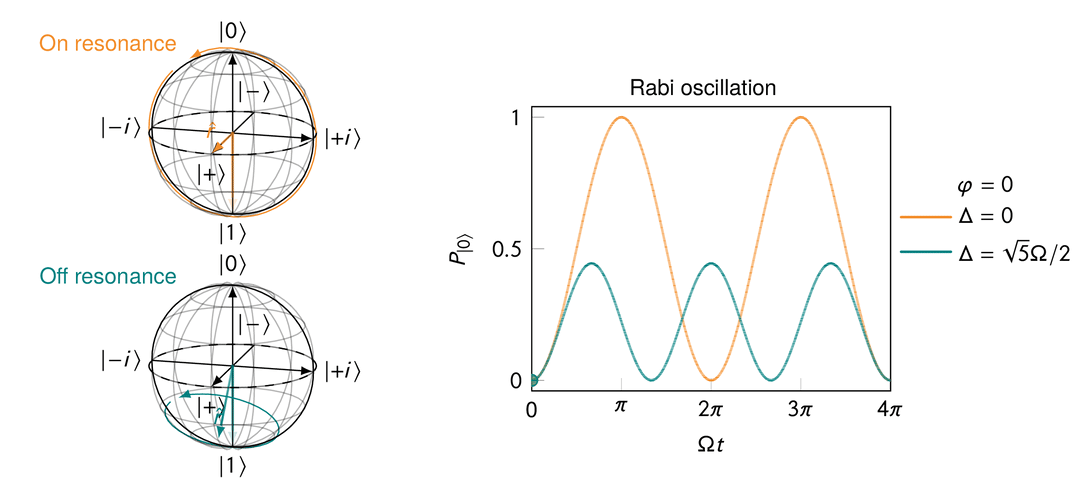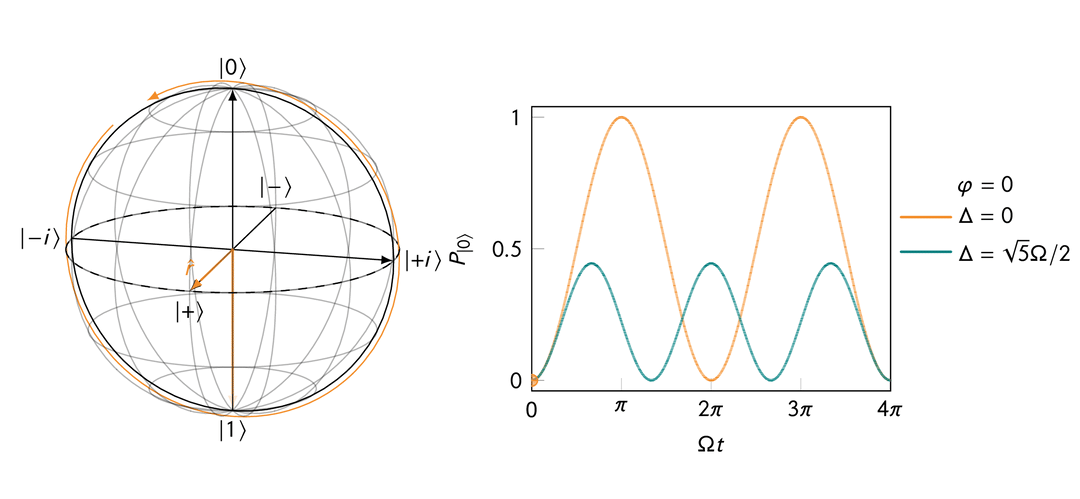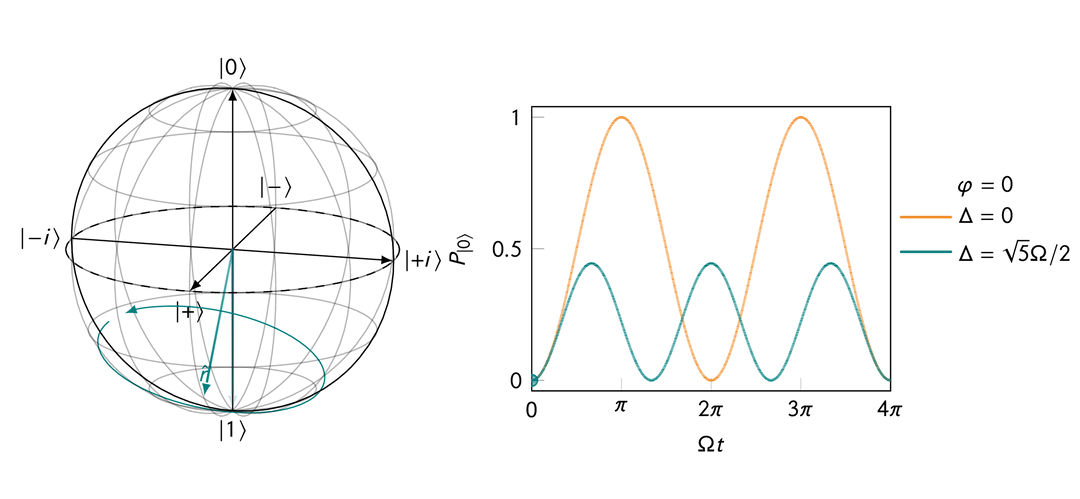Rabi oscillation and rotating frame
What visualisation of Rabi oscillation looks like and how to perform rotating frame transformation

Rabi oscillation in the presence of a transverse magnetic field after a rotating frame transformation for both “on resonance” and “off resonance” cases.
Interaction of a qubit with an oscillating magnetic field
Hamiltonian for a general magnetic field
Consider a qubit whose magnetic moment is interacting with an external magnetic field. We write the Hamiltonian of such system as such:
where
Static magnetic field with weakly oscillating transverse component
Now consider a static magnetic field along the
where I have used
Going into the rotating frame
Rewriting the Hamiltonian for convenience
Before going into the rotating frame, we can rewrite eqn
where we have also introduced
Hamiltonian in the rotating frame
To obtain the Hamiltonian in the rotating frame about the
which is time-independent! It is now possible to determine via a closed form solution what our initial input state
Time evolution due to the Hamiltonian
On resonance, i.e.,

This makes sense because when
When off resonance, i.e.,

If you apply a

In quantum computing, Rabi oscillations are crucial since they provide the basic means of manipulating the state of qubits to perform any meaningful computation.
Appendix
Derivation of the Hamiltonian in a rotating frame
Therefore,